Genre: Party Developer: Sonic Team Publisher: Sega Ent. Players: 1-2 Released: 1999
While the Genesis is my favorite Sega console of all time, there’s no denying the incredible originality and creativity the Dreamcast brought to the market. In the scant time the machine was available, it almost overwhelmed gamers with unique and innovative titles like Jet Grind Radio and Cosmic Smash. It seemed like just when you thought Sega could get no crazier, its creative teams cooked up something even more wild. Graffiti artists on rollerblades didn’t faze you? Here’s a dancing space reporter who fights aliens with music! Not impressed? How about a talking fish with a human face?
I thought the microphone included with Seaman was impressive, but Sega still had one more gaming marvel up its sleeve. As I was still reeling from my poor little fishman dying because I went too many days without playing, Sega dropped Samba de Amigo on me. A dancing monkey who played the maracas and made me strike different poses was just beyond belief – and it had its own set of actual damn maracas for me to use while playing.
Needless to say, I was hooked instantly.
Samba de Amigo was one of those games that engrossed you so completely that you didn’t even notice when someone was watching you play. The first time my wife came home to the sounds of Macarena, she caught me off guard. I never heard her pull up into the driveway or enter the house, and I only noticed she was standing at my game room door after the song ended. “You need to try this!” I exclaimed, as I thrust the maracas into her hands and shuffled her in front of the television. We had a late dinner that night, and we spent the next few hours playing and laughing. To this day, it remains one of my favorite gaming memories, and I have to be honest; the way to truly experience the full glory of Samba de Amigo was with the maracas. Without it, the game was still fun, but a certain part of its charm was gone.
That being said, the gameplay was trickier than it looked. The maracas (sold separately) came with a bar that was placed on the floor at one’s feet and on an included mat that helped identify where one was supposed to stand. Sensors at each end of the bar registered the movements of the maracas. This setup was a bit convoluted but made all the difference. With the maracas, Sonic Team took what would otherwise be a standard rhythm game and made it ooze excitement and energy. Using the circles on the screen – three on the left and three on the right – players shook the maracas as blue dots moved out from the center. Shaking the maracas at high, middle, and low heights to the beat seemed deceptively simple at first, but as the music progressed, players had to hold a pose in a particular position. All the action was prompted by Amigo, the Brazilian monkey who looked like he just consumed all of Tony Montana’s cocaine as he hopped and swayed around the screen (the whole experience must have been exceptional if played while high, with all the psychedelic colors and trippy characters dancing onscreen). Maintaining the rhythm prompted more and more of Amigo’s friends to join in until the whole thing looked like an ’80s Pepsi commercial. Aside from progressing in the game, there was an incentive to do well, as a poor performance made Amigo’s friends leave him to dance alone. Trust me, there was nothing more heartbreaking than a sad and dejected monkey in a sombrero hopping around to a Ricky Martin song.
Luckily, Samba de Amigo offered many different game modes for practice. There was the typical arcade mode that started with a meager three songs but also had a special stage if all three were completed. The Original Mode had twice as many songs at the start with more that could be unlocked. Once that had been mastered, the Challenge Mode presented 25 goals to achieve. It was a nice addition to the single-player aspect of a game most enjoyed with a second player. Party Mode had a fun selection of minigames, along with a battle game for competing against a second player. My wife and I enjoyed the Couples game most, which let us play through songs cooperatively. I only had one set of maracas, so she got to use them while I suffered with the controller. Protip: Set the game controls to “Type B” to make the game infinitely more playable that way.
Sonic Team went all-out with the presentation, and Samba de Amigo was awash in bright colors and happy characters. The standout was the soundtrack that contained several dance classics like the aforementioned Macarena, Samba de Janeiro, and La Bamba. There were a few ’90s dance hits two, like Ricky Martin’s Cup of Life and Chumbawamba’s Tubthumping. The Dreamcast game made use of the console’s modem to let players download songs from several Sega titles. If you ever wanted to shake your money-maker to Opa-Opa, Super Sonic Racing, or Magical Sound Shower, this was your chance. As of this writing, these songs are not accessible, as the game’s online features have long since been disabled. Hopefully, some enterprising fans will one day restore this functionality, as they have with other Dreamcast games like Shenmue and Floigan Bros.
I still love Samba de Amigo, despite having sold my maracas long ago. I still use the controller, and while it’s not the same experience, it’s a ton of fun, nonetheless. Acquiring a complete, in-box set is prohibitively expensive nowadays, so the controller is what most people are going to end up using. Still, Samba de Amigo remains quite playable. There’s no other game like it on the Dreamcast, and while Sega has released several updated versions since, I’m still partial to the original. Games with dancing monkeys aren’t that common, and Sonic Team likely gave us the best possible example. If you have a Dreamcast, Samba de Amigo needs to be in your library. Grab it, turn off the lights, and dance to Ricky Martin like no one is watching.

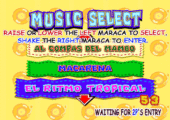
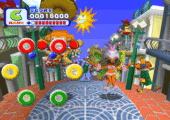
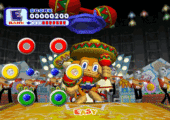
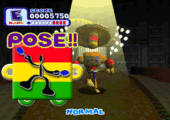
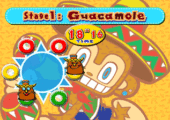
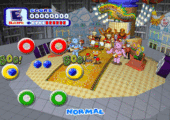
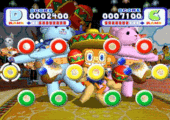
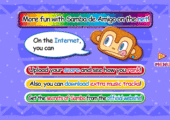
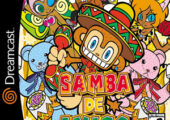
Recent Comments